|
For our last full day
in Japan, our hosts took us to
Kamakura city. As we disembarked from the train, we had to
wait for it to leave before we could exit the station by walking
across the tracks. |
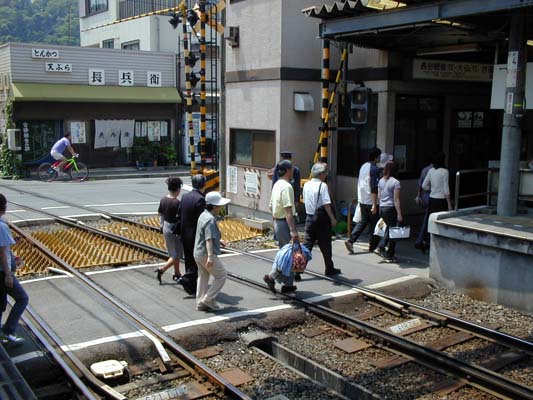 |
|
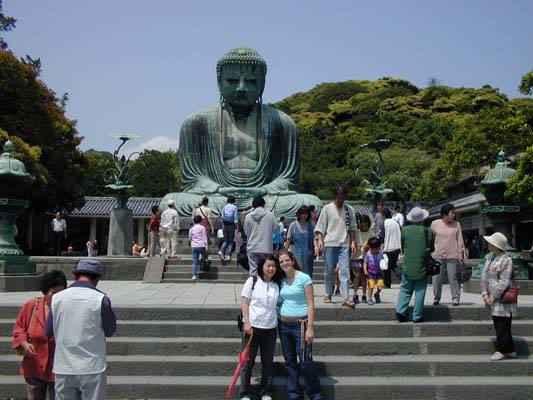 |
Our first stop was
the Daibutsu (Great Buddha) of Kamakura. The first construction
was originally of wood in 1243. However, it was damaged by a storm
just a few years later. In 1252, it was recast in bronze from
several separate pieces and assembled just as you see it here.
Look at the mouse over picture
to see the entrance to the temple grounds. |
|
|
While the statue is now out
in the open, it was originally sheltered within a great hall. Three times
the hall was destroyed by natural catastrophes and once again rebuilt. The
fourth hall was destroyed in 1495 and one last attempt was made to restore
it in 1718, but failed when the patron supporting the construction died.
Thus, since 1495, the Buddha has been exposed to the sun and rain. In
1923, a great earthquake destroyed the base, but left the body unharmed.
The base was restored a few years later. The last repair was done in 1960
to add a
brace inside the hollow body
under the lap to support the chest and head. Also, the base was modified
to allow it to move freely in the event of another earthquake. It weighs
approximately 121 tons, is about 13 meters (43 feet) tall and 9 meters (30
feet) wide, from knee to knee.
In the mouse over picture, you can actually walk inside the Buddha.
There is a ladder (handrail visible on the left, but it was closed
during our visit) that allows you to climb up and actually stand
inside the head of the Buddha. I can imagine that under the right
circumstances, that could be quite a transcendental experience. |
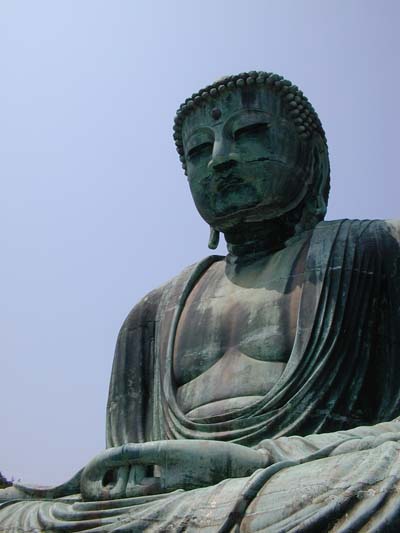 |
|
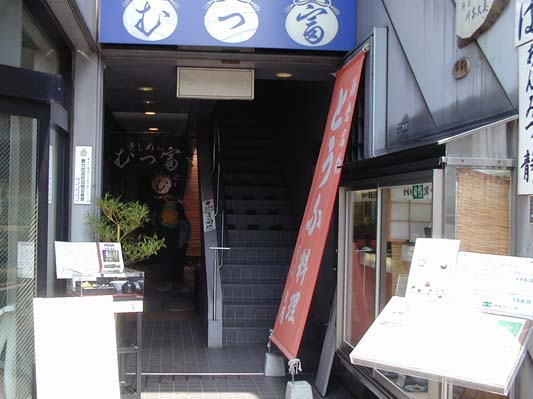 |
For lunch we had a
bento box lunch of tempura and soba at this little restaurant just
a short way from the Great Buddha. It's the meal display on the
left. |
|
|
After seeing it in
anime (Wedding Peach for one) so many times, I was delighted to
find this small crepes shop. The sweet, wafer-thin, buckwheat
pancakes are baked on a huge round stovetop and trimmed around to
form a perfect circle. Then they are rolled up in a cone shape
with fruit and ice cream. It was a uniquely delicious dessert
following our bento lunch. |
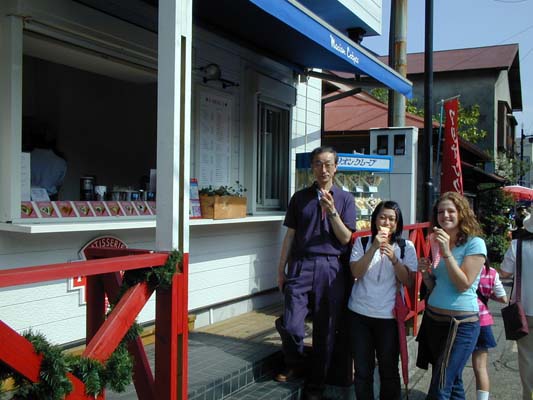 |
|
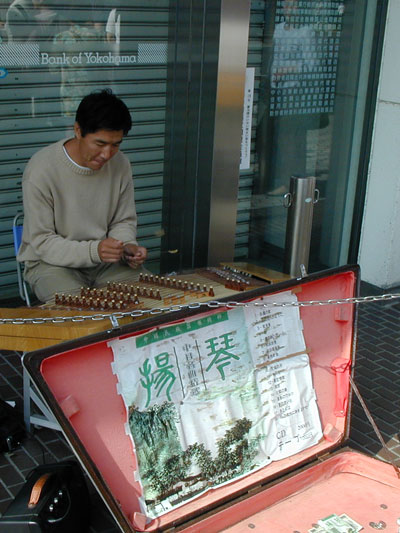 |
On our way to the
next stop, we saw a musician playing this stringed instrument by
beating the strings with small wands. Our host told us that this
must be a Chinese instrument because he had never seen its like in
Japan before. |
|
|
We arrived at the
Tsurugaoka Hachimangu Shrine just in time to see a wedding
ceremony. You can zoom into the happy couple under the red
Japanese wagasa umbrella. You can also see the red torii gate, the
traditional entrance to a Shinto shrine. |
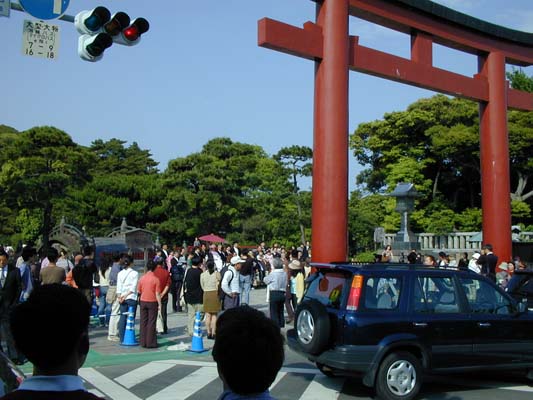 |
|
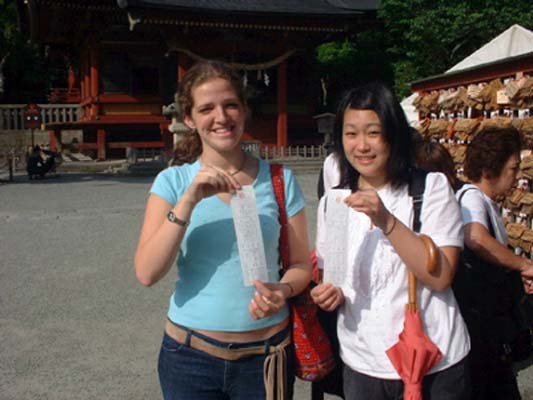 |
Once again we had the
opportunity to purchase a fortune. The process was the same, shake the
canister, draw out a stick and match it to a drawer. This time, Jennifer
pulled the very best fortune. Her friend received a good fortune.
The mouse over picture shows
the main plaza leading up to the shrine.
|
|
|
Up the 61 steps of
the stone stairway, we see the Tower gate leading into the main
hall of the shrine. To the left of the stairs is a giant ginkgo
tree. This tree is over 1000 years old and 31 meters (100 feet)
tall.
On the mouse over, you can see two women in formal kimono walking
towards the shrine. |
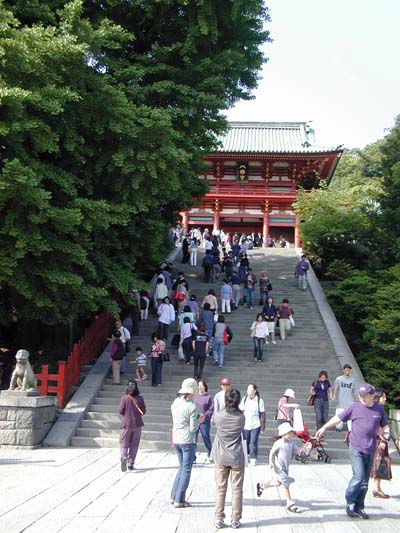 |
|
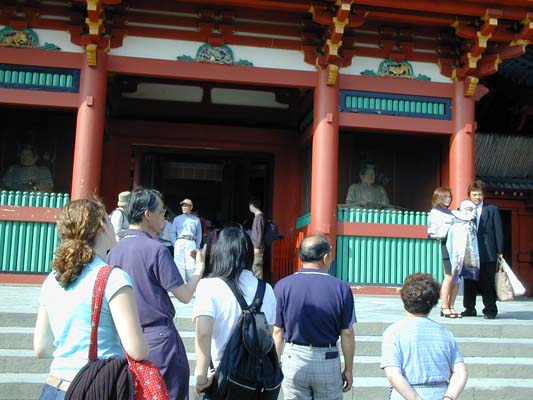 |
Here we see a couple
bringing their infant to the shrine to express gratitude to the
Shinto deities and to receive blessings from the Shinto priest.
Since this was Sunday, there were many such ceremonies taking
place.
Due to the mixing of
Shintoism and Buddhism before the Meiji Restoration of 1868, there are two
statues guarding the entrance in a manner similar to a Buddhist temple.
However, instead of the Nio gods, there are two court nobles wearing
formal costumes. |
|
|
That evening, we returned
home. For dinner, we had an unusual international meal; Domino's pizza and
sushi rolls. Afterwards, we watched the Simpsons in Japanese. That was an
interesting experience. All the voices were of the same tone and
expression as their American counterparts except for Marge, who had an
unnaturally high voice.
The next morning, May 20th,
we prepared to take a bus to the Narita airport. We had time for one last
photo in front of our host's home. Thanks to their kind and generous help,
our last few days in Japan had been a crowning experience and a wonderful
way to end our trip. To the left is the mother and to the right is the
grandfather. Next to Jennifer is her friend holding my sword from Kyoto
and those darn flagstaffs. From Mount Fuji to Hakone, to Odawara, to
Kyoto, to Hiroshima, to Miyajima, to Kurashiki and back to Tokyo, we made
it.
It had been the most
incredible trip of my entire life.
|
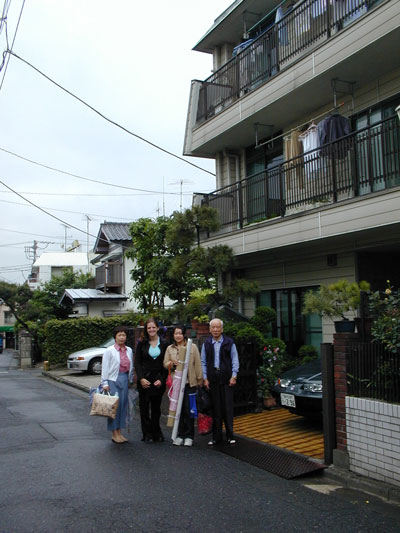 |
|